A pump is a mechanical device that transports media by transforming the energy supplied by a motor into hydraulic energy.
The first criterion for choosing a pump is the type of media concerned. The technical characteristics of the media must be taken into account because they will determine the choice of pump.
Then, in order to properly dimension the machine and calculate the operating point of the pump, it is necessary to know the parameters of the network such as: flow rate, suction head, discharge head, head losses, etc.
This guide will give you an overview of the main types of pumps and the typical situations in which they are used.
We do not, however, deal with hydraulic pumps (also known as power pumps) or vacuum pumps in this section. These two products, which differ in application and technology, are presented and offered separately.
How to choose a pump?
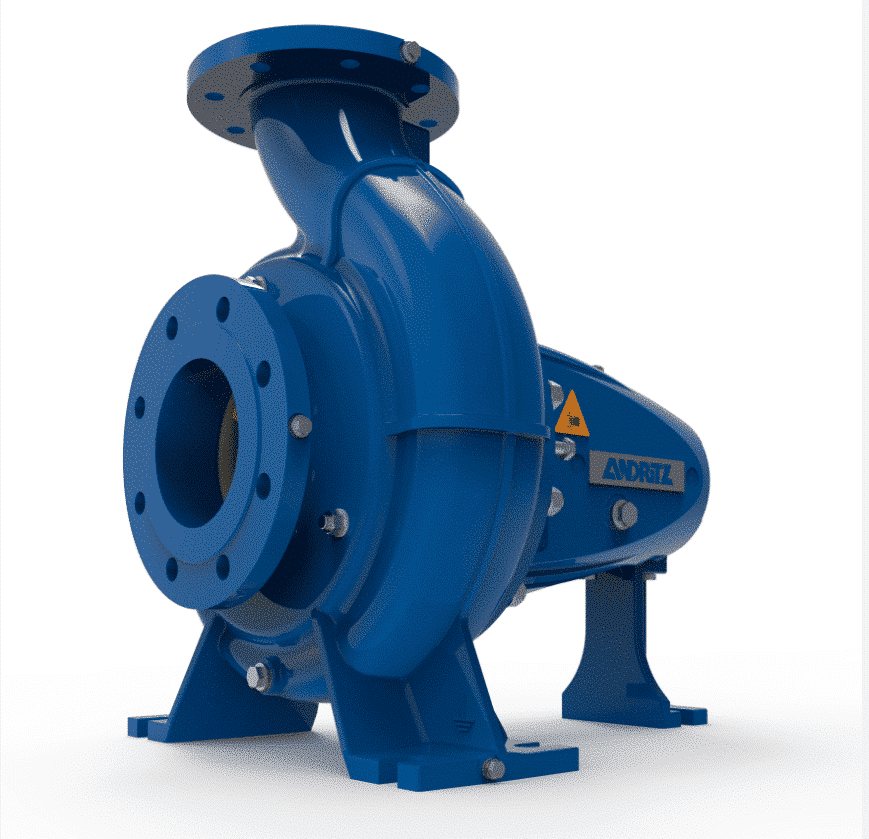
ANDRITZ water pump
In order to choose a pump that meets your needs, you must determine its characteristics according to its use.
First of all, you must determine what media will be transfered in order to avoid corrosion phenomena and therefore premature wear of your pump. It is therefore essential to know the chemical composition of the media to be pumped, its viscosity and the possible presence of solid components. A thorough knowledge of all the physical properties of the treated fluid will allow you to choose the ideal technology for your application and the construction materials compatible with the pumped media. There are chemical compatibility tables to consult before choosing the casing of your pump. Then, you should check the characteristics related to transporting the media, in particular:
- The flow you require: generally measured in m3/h (cubic meters per hour) or GPM (gallons per minute), the flow necessarily influences the size and dimensions of your pump;
- The suction head (height between the inlet of the suction pipe and the pump): as a general rule, the suction head must not exceed 10 meters. Beyond this, it is necessary to consider using a submersible pump.
- The discharge head (height between the pump and the discharge pipe outlet).
- The length of the discharge circuit.
- Head losses linked to obstacles on the pumping circuit (valves, bends, etc.).
- Whether there is a discharge tank or not could change the head.
- The temperature thus depends on the choice of pump casing
These different values allow you to calculate the NPSHa (Net Positive Suction Head available) of the setup. This will allow you to choose a suitable pump and avoid any risk of cavitation. You will also have to control the efficiency; which must be optimal at 30% more or less than the desired nominal flow rate.
What kind of media do I need to pump?
The media that needs to be transported is very important when choosing a pump as the characteristics of the pump depend on its viscosity (i.e. the fluid’s resistance to a uniform flow), its suction temperature and whether or not there are solid elements in it. You will need to determine if the media to be transported is chemically neutral or corrosive in order to choose the pump designed to operate under these conditions.
As a general rule, the more viscous the media, the more difficult the flow through your pumping system, but be careful, the viscosity of media varies according to operating conditions. There are 4 main groups of fluids according to their viscosity level; in the first group there are fluids such as water, oil or alcohol that move in the same way regardless of speed or level of agitation. For these types of uses you will not have many constraints in choosing your pump. In the second group there are certain food products such as butter or cream whose viscosity increases with agitation; therefore, in these cases, a standard centrifugal pump will not be suitable for the fluid flow. The third group includes media that has a threshold to be exceeded before flowing. Once this point is reached, the viscosity decreases with agitation. Adhesives, paints and greases are part of the fourth group that are very thick at rest, but their viscosity decreases if constant agitation is maintained.
Generally, for low viscosity fluids (the first and second group) centrifugal pumps are the most suitable because the pumping action generates a high shear rate of the fluid, as the viscosity increases you will have to take into account the additional resistance that the fluid will exert on the shear rate. On the other hand positive-displacement pumps are the best choice for viscous fluids (the third and fourth group) because they operate at lower speeds and the shear energy transferred to the fluids is lower than that of centrifugal pumps.
-
What are the different types of pumps?
There are different types of pumps, namely:
Centrifugal pumps (the fluid is sucked in by a paddle wheel or propeller); are the most common model.
Diaphragm pumps (the fluid is sucked in by the oscillation of a diaphragm).
Piston pumps (the fluid is sucked in and out by the reciprocating movement of one or more pistons).
Peristaltic pumps (the fluid is pushed into a pipe compressed by rotating rollers).
Gear pumps (the fluid is sucked in and discharged by the rotation of a rotor and pinion or by two pinions rotating in opposite directions).There are also pumps dedicated to specific uses, which incorporate the various operating principles described above, for example:
- Metering pumps, or dosing pumps, are used to inject a fluid precisely and accurately.
- Lift pumps are used for example for evacuating waste water.
- Drum pumps are used to transfer a fluid contained in a drum or a canister.
- Lubrication pumps as their name indicates are used to manage the lubrication of a system.
- Submersible pumps directly suck the fluid into the pump so it is not limited by the suction height.
When should you use a centrifugal pump?

Weir centrifugal pump
You can consider using a centrifugal pump if you need to pump media with a low viscosity and potentially containing solid elements. Centrifugal pumps are robust equipment that generally offer good efficiency.
This type of pump can pump large volumes and at a constant flow. Generally they are not self-priming. You must therefore fill the circuit independently before the pump is put into service.
You can also consider this type of pump for supplying a wastewater treatment plant, or transporting thick fluids or cleaning fluids, such as in the petrochemical industry.
When should you use a peristaltic pump?
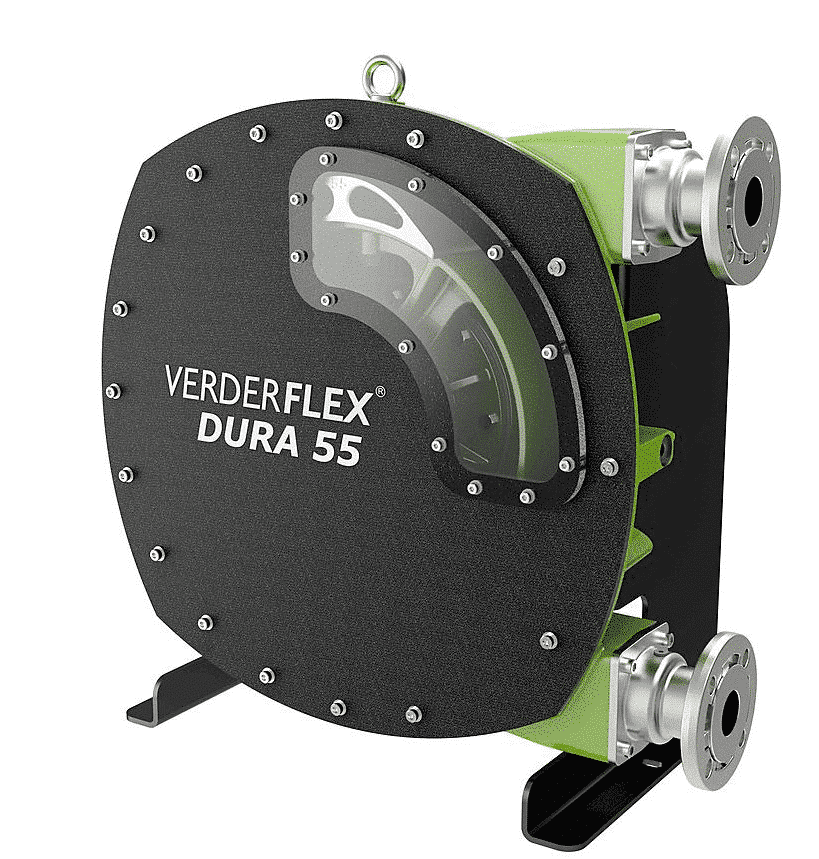
VERDERFLEX peristaltic pump
You can consider using a peristaltic pump, which is ideal for clean, sterile or aggressive media, when you need to ensure that the pumped fluid is not contaminated by an external agent. These pumps also allow you to dose the media precisely. With this type of pump, the media moves through a pipe or tube and is not in contact with the pump body, which guarantees a hygienic pumping solution.
These are self-priming pumps, because the recovery of the pipe creates a priming action and allows the pump to evacuate fluids containing air or possible gaseous residues.
On the other hand, this type of pump is relatively cumbersome compared to other pumps with similar flow rates. Additionally, the flow rate is not constant because the peristaltic pump operates with pulsations. This type of pump also requires regular maintenance to prevent wear and tear of the hose in the pump body, but the hose is the only element that needs to be replaced, which represents a relatively low cost.
Peristaltic pumps generally operate at low flow rates. They are mainly used in the chemical industry and medical field.
When should you use a diaphragm pump?

ARO double-diaphragm pump
You can consider using a diaphragm pump when you need to transport very viscous or very dense media. Generally these pumps are double-diaphragm to allow the suction and then the discharge of the media to be conveyed. These pumps can run dry: they do not require lubrication and are self-priming. These pumps are mainly used in the chemical industry, but they are extremely flexible so they are now used in many sectors such as the food industry, electronics and the mining industry.
Generally, high-capacity diaphragm pumps are pneumatically operated. You should therefore consider checking the capacity of your pneumatic network if the pump is to be used in an industrial building, or provide an air compressor nearby if you need to use the pump outdoors.
When should you use a gear pump?

WITTE gear pump
You can use a gear pump when you need to transport viscous liquids at a high pressure, if they don’t contain any solid particles. As such they are suitable for pumping highly viscous materials at high temperatures, and they also have the ability to reverse their pumping direction.
These pumps are characterized by constant flow with very little noise during operation. These pumps are generally reliable and compact with a simple design, so their maintenance will not be very expensive. However they are not ideal for very high-flow uses.
They are widely used in the automotive industry to lubricate all engine parts. They are also often used in plastic processing, in automatic presses or in the foundry sector. These pumps can also provide a dosing function.
When should you use a piston pump?
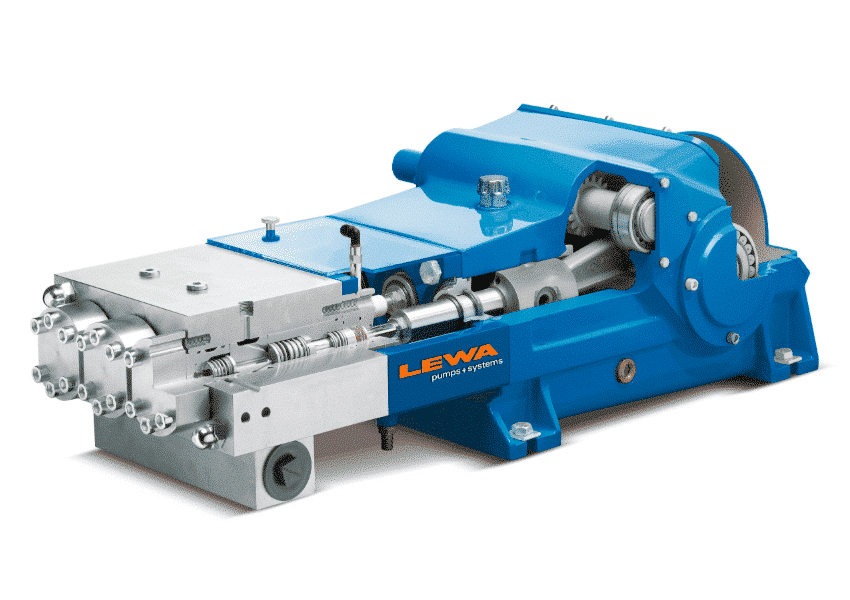
LEWA plunger pump
Piston pumps can be used for low viscosity and medium-flow media (in the range of 80 m³/h). Additionally, pumping solid particles is impossible with this type of equipment because the pump can ensure proper operation only if the seal between the cylinder and the piston is perfect.
For high-pressure uses, you can opt for a plunger pump, they differ from piston pumps in that the seal does not move with the piston, it is fixed and therefore able to withstand higher pressures.
There are different versions of multiple piston pumps (duplex, triplex, etc.) that ensure a longer life for the pump because the pressure is distributed over several pistons. In these cases, be careful with the speed of rotation because when you choose to reduce the number of pistons to reach the same pressure level the speed will be higher and, consequently, there could be higher pulsations.
These pumps are therefore ideal for reaching high pressures, and are thus very suitable for applications such as oil pumping, high pressure cleaners or for dosing applications as an alternative to diaphragm pumps.
How to choose between a submersible pump and a surface mounted pump?
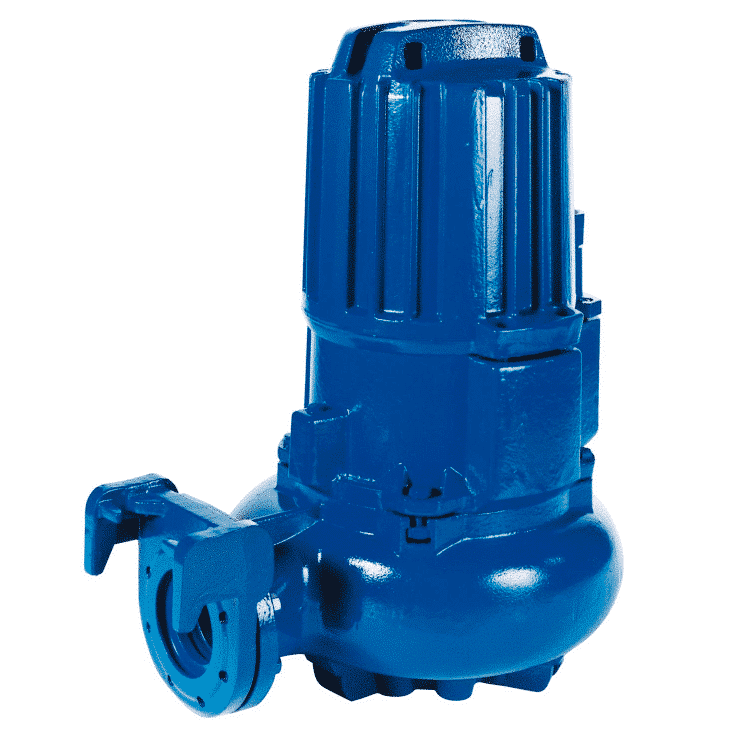
KSB submersible pump
Choosing between a submersible pump and a surface mounted pump depends on the overall suction head. If the media to be sucked is deeper than 7 meters, then you’ll need to use a submersible pump as a surface mounted pump would not be able to extract a fluid at this depth.
On the other hand, if the suction head allows for the use of both types of pump, the choice should be made according to the application, environmental conditions and frequency of use.
Surface mounted pumps allow easy access and therefore are easier to maintain. However, installation conditions may influence the performance of the pump. It is therefore necessary to provide protection against bad weather and possible external agents.Another disadvantage of surface mounted pumps is the need for priming, whereas in the case of a submerged pump the casing is immersed in the liquid to be pumped and therefore it is already primed.
In the case of a surface mounted pump, you can opt for a self-priming pump when the circuit cannot be independently primed. This type of pump is equipped with a mechanism to remove air from the suction pipe and a non-return valve to prevent the liquid from flowing back into the suction pipe when the pump is stopped.
What are the main motors used for pumps?
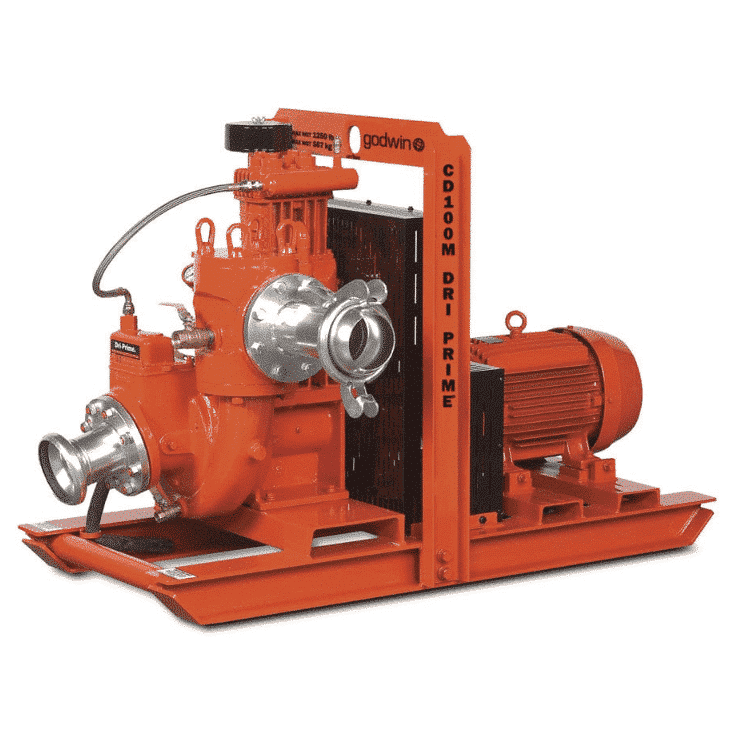
Godwin motor pump
Pumps generally have two distinct parts: the pump part itself, which transports the media, and the motorization part, which drives the pump.
Electric pumps that use an electric motor are the most common. The power supply depends in particular on the head (suction head + discharge head), head losses, transport distance and flow rate.
Autonomous pumps are generally motor pumps equipped with a combustion engine. Unlike a conventional pump that requires an external source of energy, a motor pump is a pump, generally centrifugal, associated with a combustion engine (diesel or gasoline), which makes it autonomous in its use. This type of pump is mainly used in agriculture and in emergency preparedness for fighting fires. Motor pumps are also useful as a relay when the liquid has to be transported over long distances.
There are also pneumatic pumps that operate with compressed air; these pumps are mainly used to increase the pressure in a circuit. Without referring to manual pumps, some pumps can be sold without a motor. It is then necessary to provide the system that will enable them to operate.
How do you avoid pump cavitation?
Cavitation occurs when the pumped liquid is close to its boiling point (i.e. its transformation into gas, which depends on the temperature of the liquid and the pressure it is subjected to). Cavitation is caused by the formation of imploding vapor bubbles which can quickly damage the pump and generate noise that can be annoying.
It is therefore important to check that the pump is well-adapted to the overall configuration of the installation and in particular to the suction head. To avoid pump cavitation, it is preferable to anticipate the formation of gas bubbles by checking that the pump is properly sized for the installation. This requires calculating a value called NPSHa (Net Positive Suction Head available), which depends on the flow rate, pressure, head losses and suction as well as the discharge head. The pump manufacturer indicates a value called NPSHr (Net Positive Suction Head required). Both values are expressed in meters, and for the pump to be properly sized, you must check that the calculated NPSHa is at least 0.5 m higher than the NPSHr.
If a cavitation problem still occurs, you may consider some modifications that will increase the NPSHa, such as:
- Reducing the media temperature at the pump inlet (for example by adding a cooling ring).
- Decreasing the pump speed.
- Installing a suction hose with a larger diameter.
- Reducing the head losses (caused in particular by friction) by eliminating unnecessary bends and valves.
You can also reduce the NPSHr by taking the following steps for example:
- Reducing the diameter of the discharge pipe.
- Installing a a throttle valve on the discharge circuit.
- Replacing the existing pump with a pump better-adapted to the operating conditions.

















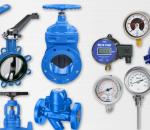
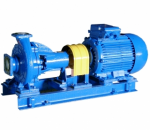
.PNG)
